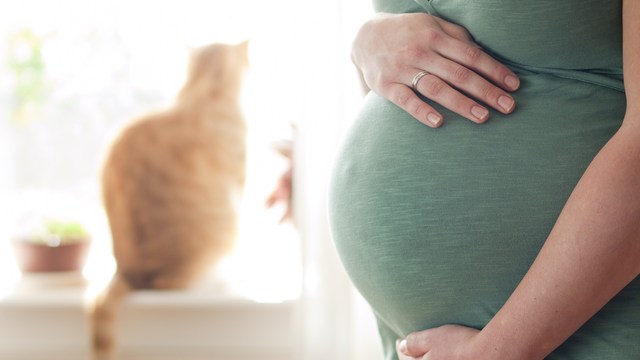When pregnant, we want to have as little complications as possible. That’s why, when diagnosed with thyroid problems before or during pregnancy, this disease should be taken very seriously. There are certain, normal changes that take place during pregnancy anyway, as it relates to the thyroid gland.
For instance, according to the American Thyroid Association (ATA), hormone changes in the thyroid are to be expected, due to estrogen. Also, it’s normal for the thyroid to become slightly enlarged as well. Size only becomes a problem if the gland becomes unusually big, then further steps will need to be taken.
When Further Steps Are Needed
According to the ATA, the most common type of hyperthyroidism is Graves’ disease, and the most common type of hypothyroidism is Hashimoto’s thyroiditis. Symptoms of hypothyroidism (Hashimoto’s thyroiditis) include: physical/mental sluggishness, unexplained weight gain, hair loss, constipation, exaggerated sensitivity to cold, irregular menstrual periods, depression, hoarseness or low voice, memory loss and tiredness.
Symptoms of hyperthyroidism (Graves’ disease) are as follows: racing heartbeat, increased bowel movements, irregular cycles, irritability, anxiety, mood swings, protruding eyeballs, muscular weakness, insomnia and thin, brittle hair.
It is noted that obtaining a diagnosis can be tricky in pregnant patients. In fact, it takes the following three steps to obtain an accurate diagnosis: consideration of past medical history, physical exam and laboratory testing. It is important for the mother to seek medical assistance as early as possible because Graves’ disease may lead to pre-eclampsia and/or early labor. It is also noted that Graves’ disease tends to stabilize in the third trimester but may regress after delivery.
In hypothyroidism or Hashimoto’s disease, in its untreated state, serious complications, such as pre-eclampsia, placental abnormalities, low birth-weight infants and prolonged and unusual bleeding after delivery may develop. As in the case of hyperthyroidism, pregnant women with hypothyroidism should be tested as soon as possible. As suggested by the ATA, testing should be done every six to eight weeks during pregnancy.
What Are the Treatment Options?
When hyperthyroidism or hypothyroidism is mild, usually only monitoring – no meds – are needed. Fortunately, when the problem is beyond mild and treatment is needed, there are medicinal options available for both conditions. Surgery is an option, of course, but this is only when medicine has not produced the desired results.
At any rate, it is important for any expecting mother to know that she can manage this disease before and during pregnancy with timely medical attention and adherence to any prescribed treatment.
Happy pregnancy!
Speaking of healthy and energetic children (maybe too energetic), please feel free to read the following article on the little rugrats:
http://www.associatedcontent.com/article/2012692/kids_do_the_darnest_things.html?cat=7
Also, if you love poetry about the power of women, please have a look at the following site:
www.blurb.com/my/book/detail/623276






Add a Comment1 Comments
If you are pregnant or trying to conceive,get your thyroid levels checked as soon as possible. It is very important.Then after giving a birth, you can try bovine thyroid to get your energy back...Bovine thyroid is proven to be very effective.
December 29, 2010 - 7:09pmThis Comment